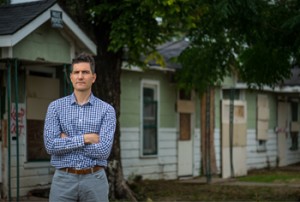
HOUSTON – While historical barriers that excluded Black America from the homeowner market for decades have crumbled, there are signs that emerging types of racial inequality are making homeownership an increasingly risky investment for African-American home seekers. A new study from sociologists at Rice University and Cornell University found that African-Americans are 45 percent more likely than whites to switch from owning their homes to renting them.
The study, “Emerging Forms of Racial Inequality in Homeownership Exit, 1968-2009,” examines racial inequality in transitions out of homeownership over the last four decades. The authors used longitudinal household data from the Panel Study of Income Dynamics for the period 1968 to 2009, with a study sample of 6,994 non-Hispanic whites and 3,158 black homeowners.
The research revealed that despite modest gains in attaining homeownership over time, the racial gap in the likelihood of changing from ownership to renting began to widen in the 1990s. During the next two decades, African-American homebuyers were consistently over 45 percent more likely than whites to transition out of homeownership. The authors claim that their findings point to a historical shift in racial stratification in American housing markets, from a system of overt market exclusion to, more recently, one of market exploitation.
“The 1968 passage of the Fair Housing Act outlawed housing market discrimination based on race,” said Gregory Sharp, a postdoctoral fellow in Rice’s Department of Sociology and the study’s lead author. “African-American homeowners who purchased their homes in the late 1960s or 1970s were no more or less likely to become renters than were white owners. However, emerging racial disparities over the next three decades resulted in black owners who bought their homes in the 2000s being 50 percent more likely to lose their homeowner status than similar white owners.”
Sharp noted that these inequalities in homeownership exit held even after adjusting for an extensive set of life-cycle traits, socioeconomic characteristics, characteristics of housing units and debt loads, as well as events that prompt giving up homeownership, such as going through a divorce or losing a job.
Sharp said the deregulation of the mortgage markets in the 1980s – when Congress removed interest rate caps on first-lien home mortgages and permitted banks to offer loans with variable interest rate schedules – and subsequent emergence of the subprime market are likely reasons blacks were at an elevated risk of losing their homeowner status. In 2000, African-Americans were more than twice as likely as whites with similar incomes to sign subprime loans; among lower-income blacks, more than half of home refinance loans were subprime.
“African-American homeowners’ heightened subprime rates were not only due to their relatively weaker socioeconomic position, but also because lenders specifically targeted minority neighborhoods,” Sharp said.
Sharp and his coauthor hope the research will prompt further analysis of additional factors that potentially contribute to racial disparities in homeownership exit, such as household wealth and residential location.
The study will appear in the August edition of Social Problems and was coauthored by Matthew Hall, a demographer and assistant professor of public policy at Cornell University. A National Institutes of Health grant from Pennsylvania State University’s Population Research Institute Center funded the research, which is available online at http://bit.ly/1rDgkmL.




